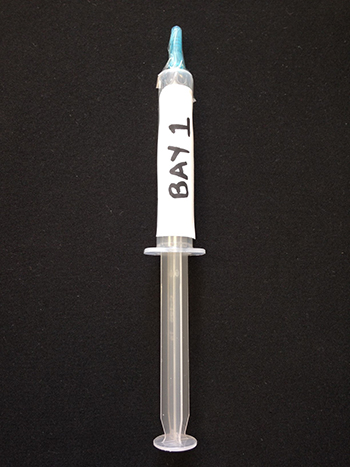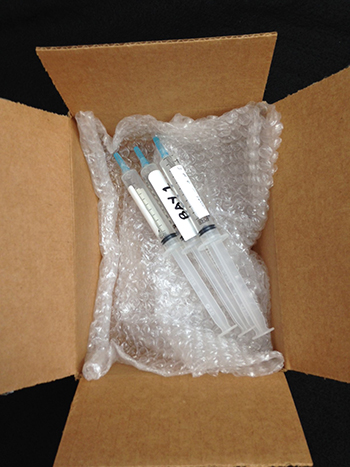How to take air samples in the greenhouse to test for ethylene and other air pollutants
Take air samples close to the suspected heater or boiler and send them to your local lab for analysis.

On very cold days, unit heaters and boilers are working overtime to achieve set point temperatures in greenhouses. Inevitably now is when ethylene damage on plants occurs most frequently, when greenhouses are rarely venting in order to prevent heat losses and wasted energy. Ethylene and other hydrocarbons are released when there is an incomplete oxidation of propane and natural gas. The most common negative plant responses to ethylene are leaf twisting, chlorophyll loss and dropping (abscission) of leaves and flowers. For more information on plant responses to ethylene, read “Prevent ethylene and carbon monoxide from occurring in your greenhouse.”
If you suspect ethylene is a problem in your production area, first check the exhaust outlets from heaters and their connections for possible leaks. If you have unit heaters, check that none of the heat exchangers are cracked. To verify the levels of ethylene, you should submit air samples to a lab for testing (see end of article for information on submitting samples). First obtain 5 or 10 mL syringes. We often recommend using glass syringes since plastic syringes can absorb gaseous compounds. However, plastic syringes can also be adequate, depending on their age and previous contents and if you can arrange for overnight shipping with a guaranteed 10 a.m. arrival time. Next, you should make a list of all the areas of the greenhouse where you believe there may be an ethylene problem and label the syringes with corresponding codes.
Take the syringes, remove the rubber septa and sample the air directly coming out of a suspected unit heater or close to a suspected boiler. Take samples from all areas of the greenhouse that are believed to be affected and a couple of samples from an area that is not. Also, take one sample from outside of the greenhouse as a control. As you pull the air samples, immediately replace the cap or cover them with a rubber septa. You may want to secure the seal with adhesive tape (Photo 2). Michigan State University Extension recommends you then package them in bubble wrap to be shipped to your local lab (Photo 3). We recommend the air samples be received by the lab the next day with plastic syringes, or within two days if using glass syringes. It is extremely important you contact your local lab beforehand to inform them your samples are coming and ensure prompt analysis.


Photos 2-3. Left, Syringe containing air sample that is labeled and sealed with a septa secured with adhesive tape. Right, Air samples that are labeled and wrapped in bubble wrap ready for shipping. When using glass syringes, place bubble wrap between individual syringes also. Photos: Heidi Wollaeger, MSU Extension
For Michigan growers needing air sample testing, MSU horticulture professor Randy Beaudry will be able to analyze your sample for ethylene and other hydrocarbons. If you are also concerned about CO2 levels, he can analyze your sample for CO2. The charges for the testing include a handling fee of $10 plus an additional $3.50 per sample to test for ethylene and other hydrocarbons and $3.50 per sample to test CO2 levels. Samples can be sent to:
Randolph Beaudry
Michigan State University
Dept. of Horticulture, Plant & Soil Science Building
1066 Bogue Street, Room A22
East Lansing MI 48824
For more information, see “Sampling greenhouses for ethylene” and “Avoiding ethylene problems.”



 Print
Print Email
Email


